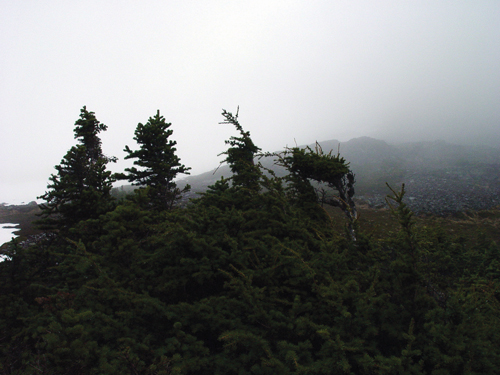
Information Forestry, December 2012—
British Columbia is home to some of Canada’s highest-elevation forests. In the very highest of these—growing at treeline in or near the true alpine—evergreens hug the ground, twisted and bent by wind and snow pack, with vertical leaders repeatedly pruned by severe winter temperatures, ice, and wind. Many models that predict how changing climate will affect species distribution assume temperature limits both growth and spread of these forests. As global temperatures rise with climate change, these models forecast the forests will straighten, grow tall, and colonize ever-higher slopes.
However, a recent study by Natural Resources Canada Research Scientist Eliot McIntire suggests these assumptions need re-examination. McIntire and colleague Alex Fajardo, of the University of Montana, tracked growth at high-altitude treelines in the Chilean Andes and Montana’s Rocky Mountains. Basal tree cores at the sites show tree growth and colonization up the slopes improved for most of the past 200 to 300 years. This corresponds to a period when global temperatures were just beginning to climb to today’s levels out of the very coldest decades of the last millennium.
“Synchrony between temperature and growth and temperature and recruitment clearly occurred during that period in both regions,” says McIntire. “Then, during the past half-century, it was lost at all sites.”
In fact, any improvements in growth that had occurred have since disappeared or reversed.
This decoupling of temperature and high-altitude growth and recruitment rates may indicate that the world is entering a period in which temperature no longer drives growth and colonization at treelines, McIntire says. Other factors, such as availability of water, may now be the main constraints.
The findings suggest climate models may need to be modified to separate high-altitude growth and recruitment drivers if they are to capture what is really going on under British Columbia’s—and the world’s—highest forest canopies.
© Natural Resources Canada 2013


You must be logged in to leave a reply.